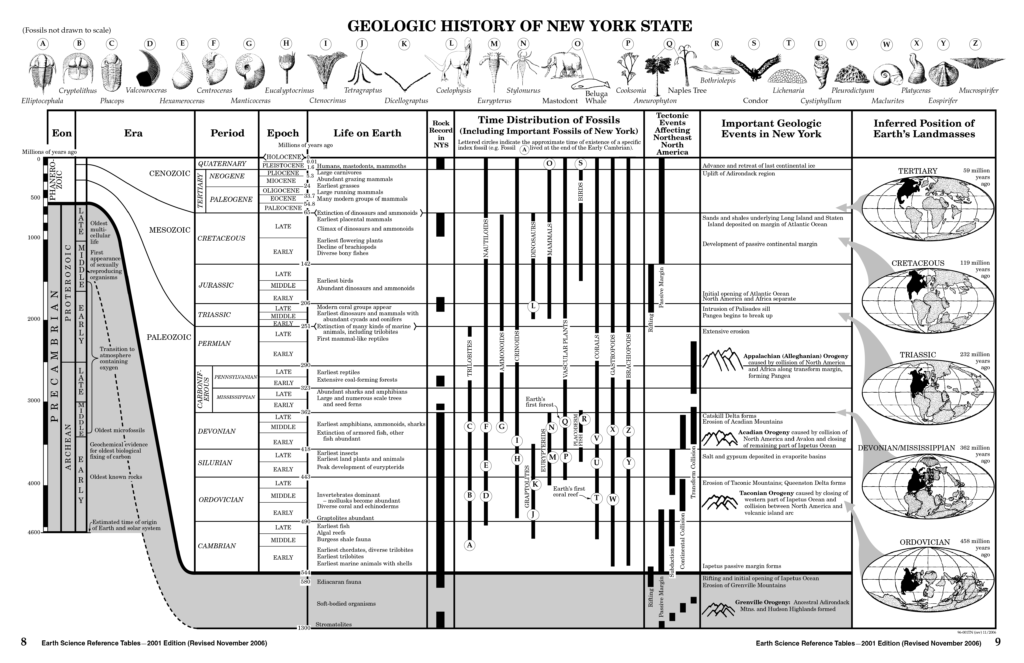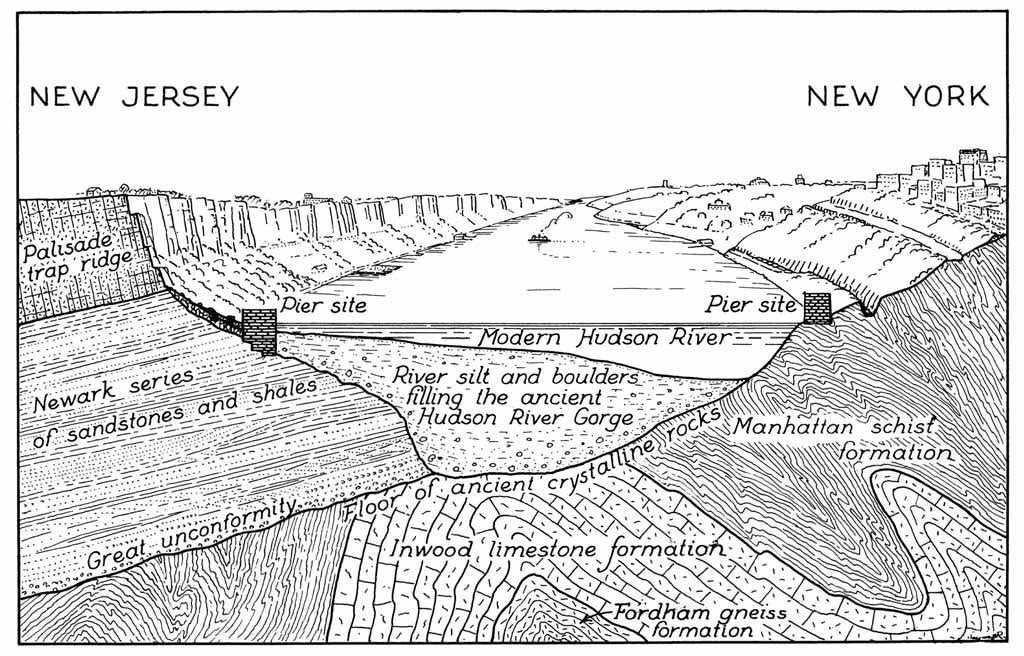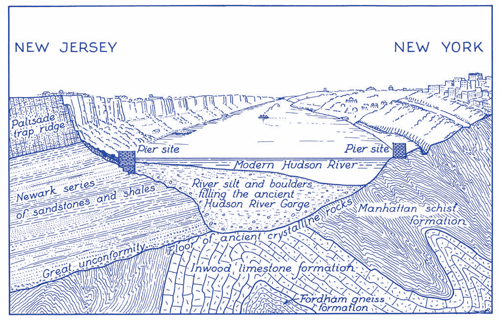The Manhattan Prong
The Manhattan Prong was formed approximately 550 million years ago and extended all the way to southwest Connecticut (from the Algonquian Quinnitukqut meaning “at the long tidal river”). Its formation consisted of rolling hills and valleys, controlled by the underlying bedrock. Much of the bedrock was covered by Atlantic Coastal Plain deposits. Metamorphic rocks resistant to erosion comprised the hills, including the Fordham and Yonkers Gneiss, the Lowerre Quartzite, and the Manhattan Schist. The Hudson, Harlem, and East Rivers and the major north-south valleys in (what is now often referred to colonially as) northern Westchester County are all underlain by easily-erodible Inwood Marble formed from the metamorphosing of shallow water marine carbonate and clastic sediment. The formation of Inwood marble extended to the Inwood section of northern Manhattan. The rocks of the Manhattan Prong were tightly folded and metamorphosed primarily during the Taconian Orogeny, about 450 million years ago.

Image Credit: New York State Museum. Link.



A block of Fordham Gneiss from the east end of Washington Bridge, N. Y. The specimen closely resembles the gneiss of Manhattan Island and is 20 inches across. The area of serpentine is very small and is now inaccessible on account of buildings. It is at Tenth Avenue and West Fifty-eighth Street. The magnesian limestone, or dolomite, occurs in zones in Harlem, where it is now almost covered with buildings, and in the Kingsbridge section of the island, where a good exposure may be seen along the Spuyten Duyvil ship-canal.
The American Museum journal, 1906. Link.



